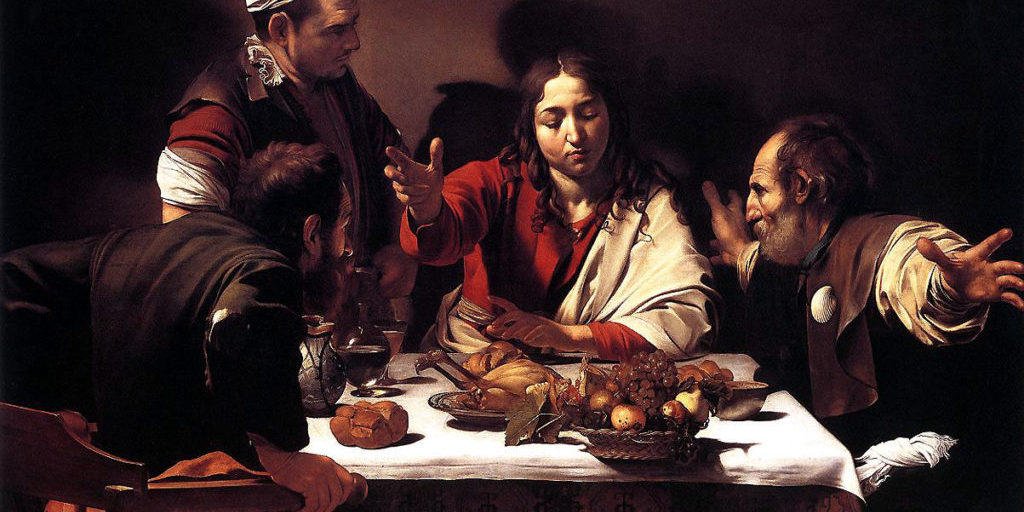
Do the Gospels Contradict One Another? Harmonizing the Resurrection Accounts
By Matthew Barrett—
If you have ever read through the gospels, perhaps in one sitting, you may have noticed that there are differences in the resurrection narratives as to what took place. Did Mary come to the tomb alone or was their a group of women? Was there just one angel or several? Most critics of Scripture, as George Eldon Ladd observes, simply “throw up their hands and refuse to attempt any harmonization.” The stories are contradictory, they cry. So we must choose which story is right or admit that each story has its flaws, some more than others.
But as Ladd notes, such an approach ignores the fact that each gospel writer selects his material with a view to his own interest. “The gospels must be evaluated from the point of view of their intention, not from an artificial purpose superimposed upon them by a modern concept of historiography. It is clear that the Gospels do not intend to give us a complete record of all the resurrection appearances.”
That said, the question remains, “Can the gospel accounts be harmonized or do they contradict one another?” I believe the accounts can indeed be harmonized. The writers of each gospel do not contradict one another, but rather each writer highlights certain details of what took place. What might a harmonization look like? While there are undoubtedly other harmonizations, I think George Eldon Ladd’s harmonization in I Believe in the Resurrection of Jesus (91-93) takes us a long way. So ready or not, here we go:
1. The earthquake and removal of stone occurs before dawn.
2. A group of four women come early to the tomb, wondering who will move the stone. As they approach, they are amazed to see that the stone has been rolled away.
3. Mary rushes off to tell Peter and John that the body of Jesus has been stolen (Jn. 20:2).
4. The other women stay in the garden. They enter the tomb and are met by two angels, who tell them to carry word of the resurrection to the disciples. The problem of “a young man” of Mark 16:5, “two men” of Luke 24:4, “angels” of Luke 24:23, is one of the “ordinary” Synoptic divergencies of detail.
5. The women rush away from the garden, filled with mingled emotions of fear and joy, speaking to no one about the vision of the angels at the empty tomb (Mk. 16:8).
6. Later in the day, Jesus met them (Matthew 28:9 does not say that this meeting occurred in the garden). They had run away from the tomb. Jesus tells them to bear the word to the disciples; they depart to find the disciples, who are not together but scattered (Mt. 26:56).
7. Peter and John, having been informed by Mary, come to the tomb after the women have left. They see the clothes; vague comprehension dawns on John. They rush off to gather the disciples.
8. Mary returns to the tomb after Peter and John have left; they had run to the tomb (Jn. 20:4), leaving Mary behind. She still thinks the body has been stolen. She is weeping outside the tomb, knowing nothing of the experience of the women she had left in the garden. She sees the two angels, then Jesus (Jn. 20:11-17). (Mark 16:9 is not authentic. [Ladd’s opinion])
9. After the first shock of amazement had worn off, the women find some of the disciples; the disciples cannot believe the fanciful story (Lk. 24:11).
10. The disciples have gathered together.
11. Mary arrives and tells her experience (Jn. 20:18).
12. That afternoon, the walk to Emmaus.
13. Sometime that afternoon, an appearance to Peter (Lk. 24:34).
14. That evening, the disciples are together in the closed room. They had been scattered, but the testimony of the women, of Peter and John, then of Mary, serves to bring them all together. Thomas was absent.
15. A second appearance to the eleven, including Thomas.
16. Galilee (Mt. 28:16). The appearance by Tiberias (Jn. 21) and to the 500 brethren (1 Cor. 15:6).
17. Return to Jerusalem; the final appearance and ascension.
The above harmonization is an attempt to reconcile some of the details that might appear to conflict with one another. Too often we come to the gospels assuming each writer is giving an exhaustive, meticulous account of every detail that took place. It is important to remember that each writer, however, chose to focus on certain details and not others. Therefore, as the above harmonization hopefully demonstrated, these details are not at odds with one nor do the gospels contradict one another, but each gospel is historically reliable even while they present narratives that are diverse, each author telling the story differently. And let us not forget, would we have trusted the four gospels if every account was word-for-word the same? If this were the case, we would be suspicious, like when a teacher sees two students with the same essay. So the diversity in the accounts while at first appearing problematic, actually provides credibility. Or as Ladd states so well, “There may even be a virtue in the fact that the evangelists present such diverse accounts, for it shows their independence of each other and suggests that the points on which they do agree are likely to be all the more historically reliable.”
Ladd’s harmonization is one attempt. But what about you? Do you agree with Ladd or do you harmonize the events differently?
Matthew Barrett (Ph.D., The Southern Baptist Theological Seminary) is the founder and executive editor of Credo Magazine. Barrett has contributed book reviews and articles to various academic journals, and he is the author of several forthcoming books. He is married to Elizabeth and they have two daughters, Cassandra and Georgia. He is a member of Clifton Baptist Church in Louisville, KY.

